Wikipedia
This text was copied from Wikipedia on 24 July 2024 at 6:11AM.
| Most Noble Order of the Garter | |
|---|---|
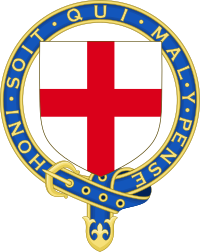 | |
| Awarded by the Monarch of the United Kingdom | |
| Type | Dynastic order |
| Established | 1348 (1348) |
| Motto | Honi soit qui mal y pense (Anglo-Norman for 'Shame on him who thinks evil of it')[1] |
| Criteria | At the monarch's pleasure |
| Status | Currently constituted |
| Founder | Edward III |
| Sovereign | Charles III |
| Chancellor | The Baroness Manningham-Buller |
| Prelate | The Bishop of Winchester (ex officio) |
| Classes |
|
| Statistics | |
| First induction | 1348 |
| Total inductees |
|
| Precedence | |
| Next (higher) | George Cross |
| Next (lower) | Order of the Thistle |
 Ribbon of the Order of the Garter | |


The Most Noble Order of the Garter is an order of chivalry founded by Edward III of England in 1348. The most senior order of knighthood in the British honours system, it is outranked in precedence only by the decorations of the Victoria Cross and the George Cross. The Order of the Garter is dedicated to the image and arms of Saint George, England's patron saint.
Appointments are at the Sovereign's sole discretion, typically made in recognition of national contribution, service to the Crown, or for distinguished personal service to the Monarch.[2] Membership of the order is limited to the sovereign, the Prince of Wales, and no more than 24 living members, or Companions. The order also includes Supernumerary Knights and Ladies (e.g., members of the British royal family and foreign monarchs).
The order's emblem is a garter circlet with the motto Honi soit qui mal y pense (Anglo-Norman for 'Shame on him who thinks evil of it') in gold script.[3] Members of the order wear it on ceremonial occasions.
History

King Edward III founded the Order of the Garter around the time of his claim to the French throne.[1] The traditional year of foundation is usually given as 1348 (when it was formally proclaimed). However, The Complete Peerage, under "The Founders of the Order of the Garter", states the order was first instituted on 23 April 1344, listing each founding member as knighted in 1344. The list includes Sir Sanchet d'Abrichecourt, who died on 20 October 1345.[4] Other dates from 1344 to 1351 have also been proposed. The King's wardrobe account shows Garter habits first issued in the autumn of 1348. Also, its original statutes required that each member of the Order already be a knight (what would now be referred to as a knight bachelor) and some of the initial members listed were only knighted that year.[5] Its foundation is likely to have been inspired by the Castilian Order of the Band, established in about 1330.[6]
List of Founder Knights
At the time of its foundation, the Order consisted of King Edward III, together with 25 Founder Knights, listed in ascending order of stall number in St George's Chapel:[7]
- King Edward III (1312–77)
- Edward, the Black Prince, Prince of Wales (1330–76)
- Henry of Grosmont, 4th Earl of Lancaster (c. 1310–61)
- Thomas de Beauchamp, 11th Earl of Warwick (1313–69)
- Jean de Grailly, III Captal de Buch (d. 1376)
- Ralph de Stafford, 1st Earl of Stafford (1301–72)
- William de Montacute, 2nd Earl of Salisbury (1328–97)
- Roger Mortimer, 2nd Earl of March (1328–60)
- John, 2nd Baron Lisle (1318–55)
- Bartholomew, 2nd Baron Burghersh (c. 1329–69)
- John, 1st Baron Beauchamp (d. 1360)
- John, 2nd Baron Mohun (c. 1320–76)
- Sir Hugh de Courtenay (1327–49)
- Thomas Holland, 1st Earl of Kent (1314–60)
- John, 1st Baron Grey de Rotherfield (1300–59)
- Sir Richard Fitz-Simon (1295–1348/49)
- Sir Miles Stapleton (c. 1320–64)
- Sir Thomas Wale (1303–52)
- Sir Hugh Wrottesley (d. 1381)
- Sir Nele Loring (1320–86)
- Sir John Chandos (c. 1320–69)
- Sir James Audley (c. 1318–69)
- Sir Otho Holand (c. 1316–59)
- Sir Henry Eam (d. before 1360)
- Sir Sanchet d'Abrichecourt (c. 1330–59)[4]
- Sir Walter Paveley (1319–75)
They are all depicted by individual portraits in the Bruges Garter Book compiled c. 1431, and now in the British Library.
Legendary origins
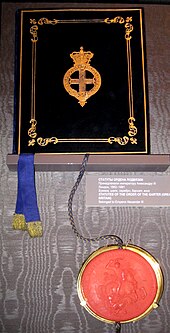
Various legends account for the origin of the Order. The most popular involves the "Countess of Salisbury", whose garter is said to have slipped from her leg while she was dancing at a court ball at Calais. When the surrounding courtiers snickered, the king picked it up and returned it to her, exclaiming, "Honi soit qui mal y pense!" ('Shame on him who thinks ill of it!'), which phrase has become the Order's motto.[1][8] However, the earliest written version of this story dates from the 1460s, and it seems to have been conceived as a retrospective explanation for the adoption of what was then seen as an item of female underclothing as the symbol of a band of knights. In fact, at the time of the Order's establishment in the mid-14th century, garters were predominantly an item of male attire.[9]
According to another legend, King Richard I was inspired in the 12th century by St George the Martyr while fighting in the Crusades to tie garters around the legs of his knights, who subsequently won the battle. King Edward supposedly recalled the event in the 14th century when he founded the Order.[5] This story is recounted in a letter to the Annual Register in 1774:[10]
In Rastel's Chronicle, I. vi. under the life of Edward III is the following curious passage: "About the 19 yere [sic] of this kinge, he made a solempne feest at Wyndesore, and a greate justes and turnament, where he devysed, and perfyted substanegally,[11] the order of the knyghtes of the garter; howe be it some afferme that this order began fyrst by kynge Rycharde, Cure de Lyon, at the sege of the citye of Acres; where, in his great necessyte, there were but 26 knyghtes that fyrmely and surely abode by the kynge; where he caused all them to were thonges of blew leyther about theyr legges. And afterwarde they were called the knyghtes of the blew thonge." I am obliged for this passage to John Fenn, Esq; a curious and ingenious gentleman of East-Dereham, in Norfolk, who is in possession of the most rare book whence it is taken. Hence some affirm, that the origin of the garter is to be dated from Richard I* and that it owes its pomp and splendor to Edward III.
- *Winstanley, in his Life of Edward III says that the original book of the institution deduces the invention from King Richard the First.
The motto in fact refers to Edward's claim to the French throne, and the Order of the Garter was created to help pursue this claim.[12] The use of the garter as an emblem may have derived from straps used to fasten armour, and may have been chosen because it held overtones of a tight-knit "band" or "bond" of knightly "supporters" of Edward's cause.[1][13]
There is a connection between the Order of the Garter and the Middle English poem Sir Gawain and the Green Knight (late 14th century). The motto is inscribed, as hony soyt qui mal pence, at the end of the text in the sole surviving manuscript in the British Library, albeit in a later hand.[14] In the poem, a girdle, very similar in its erotic undertones to the garter, plays a prominent role. A rough equivalent of the Order's motto has been identified in Gawain's exclamation corsed worth cowarddyse and couetyse boþe ('cursed be both cowardice and coveting', v. 2374).[15] While the author of that poem remains disputed, there seems to be a connection between two of the top candidates and the Order of the Garter, John of Gaunt, 1st Duke of Lancaster, and Enguerrand de Coucy, seventh Sire de Coucy. De Coucy was married to King Edward III's daughter, Isabella, and was given admittance to the Order of the Garter on their wedding day."[16]
Ladies of the Garter
Soon after the founding of the Order, women were appointed "Ladies of the Garter", but some historians argue that they were not appointed Companions, as they were not Knights. Queen Philippa was the first Lady to be appointed in 1358. King Henry VII discontinued the practice in 1488; his mother, Margaret Beaufort, was the last Lady of the Garter before Queen Alexandra.
Except for female sovereigns, the next Lady of the Garter named was Queen Alexandra, by her husband King Edward VII. King George V also made his consort, Queen Mary, a Lady of the Garter and King George VI subsequently did the same for his wife, Queen Elizabeth, and his daughter Princess Elizabeth (later Queen Elizabeth II). Throughout the 20th century, women continued to be associated with the Order, but save for foreign female monarchs, they were not made Companions.[17]
In 1987, by a statute of Queen Elizabeth II, the installation of "Ladies Companion of the Garter" became possible.[18]
In 2022, Valerie, Baroness Amos, became the first Black Lady Companion of the Order since its foundation.[19] Eliza, Baroness Manningham-Buller, became the first Lady Companion to be appointed chancellor of the Order, on 18 June 2024.[20]
Composition

Members
Membership in the Order is strictly limited and includes the Monarch, the Prince of Wales, not more than 24 Companion members, and various supernumerary members. The Monarch alone decides who is appointed.[21] The Monarch is known as the Sovereign of the Garter, and the Prince of Wales is known as a Royal Knight Companion of the Garter.[22]
Male members of the Order are titled "Knights Companion" and female members are called "Ladies Companion". Formerly, the Sovereign filled vacancies upon the nomination of the members. Each member would nominate nine candidates, of whom three had to have the rank of earl or higher, three the rank of baron or higher, and three the rank of knight or higher. The Sovereign would choose as many nominees as were necessary to fill any vacancies in the Order. They were not obliged to choose those who received the most nominations. Candidates were last nominated in 1860, and appointments have since been made by the Sovereign acting alone, with no prior nominations. The statutes prescribing the former procedure were not amended, however, until 1953.[23]
From the 18th century, the Sovereign made their choices on the advice of the Government. In 1946, with the agreement of Prime Minister Clement Attlee and Opposition Leader Winston Churchill, membership of Great Britain's highest ranking orders of chivalry (the Order of the Garter, the Order of the Thistle and the dormant Order of St Patrick) became a personal gift of the Sovereign once again.[17] Thus, the Sovereign personally selects Knights and Ladies Companion of the Garter, without political influence.[24] Appointments are typically announced on Saint George's Day (23 April).[17]
Supernumerary members
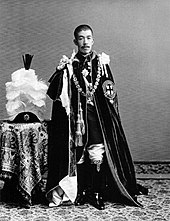
The Order includes supernumerary members, whose number do not count towards the limit of 24 companions. Several supernumerary members, known as "Royal Knights and Ladies of the Garter", belong to the royal family. These titles were introduced in 1786 by King George III so that his many sons would not curtail the number of non-royal companions. He created the statute of supernumerary members in 1805 so that any descendant of King George II could be installed as such a member. In 1831, this statute was extended again to include all descendants of King George I.[5]
With the installation of Emperor Alexander I of Russia in 1813, supernumerary membership was extended to foreign monarchs, who are known as "Stranger Knights and Ladies of the Garter".[25] Each such installation originally required the enactment of a statute; however, a 1954 statute authorises the regular admission of Stranger Knights or Ladies without further special enactments.[25]
Degradation of members
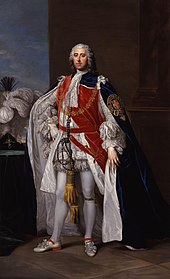
The Sovereign may "degrade" members who have taken up arms against the Crown. From the late 15th century, there was a formal ceremony of degradation, in which Garter King of Arms, accompanied by the rest of the Heralds, processed to St George's Chapel. While the Garter King read aloud the Instrument of Degradation, a Herald climbed up a ladder and removed the former Knight's banner, crest, helm, and sword, throwing them down into the quire. Then the rest of the Heralds kicked them down the length of the chapel, out of the doors, and into the castle ditch. The last such formal degradation was that of James, Duke of Ormonde, in 1716.[26]
During the First World War, two Royal Knights and six Stranger Knights, all monarchs or princes of enemy nations and including Kaiser Wilhelm II of Germany, and Emperor Franz-Joseph of Austria, were struck off the roll of the order, their appointments being annulled in 1915.[25] The banner of King Victor Emmanuel III was removed from the chapel after Italy entered World War II against the United Kingdom and its allies in 1940.[27] The banner of Emperor Hirohito was removed from St George's Chapel when Japan entered World War II in 1941, but that banner and his knighthood were restored by Elizabeth II in 1971, when Hirohito made a state visit to the United Kingdom. The Emperor was particularly pleased by the restoration to the Garter.[28]
Officers
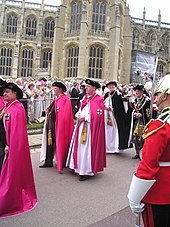
The Order has six officers: the Prelate, the Chancellor, the Register, the Garter Principal King of Arms, the Usher, and the Secretary.[29] The offices of Prelate, Register, and Usher were created on the order's establishment; those of Garter Principal King of Arms and Chancellor, in the 15th century; and that of Secretary, in the 20th century.[30]
William of Edington, Bishop of Winchester, was the first Prelate of the Order, and that office has since been held by his successors at Winchester, traditionally a senior bishopric of the Church of England.[31]
The office of Chancellor is now held by one of the companions of the order. For most of its existence, the Bishop of Salisbury has held the office, although laymen held it from 1553 to 1671. In 1837, after boundary changes made Windsor Castle fall in the diocese of Oxford, the Chancellorship was transferred to the Bishop of Oxford. A century later, the Bishop of Salisbury challenged this transfer, on the grounds that the Chancellorship had been attached to his office regardless of the diocese in which the chapel of the order lay; and that, in any event, St George's Chapel, as a Royal Peculiar, was not under diocesan jurisdiction. The office of Chancellor was removed from the Bishop of Oxford (the outgoing bishop, Thomas Strong, had been outspoken in the abdication crisis of Edward VIII), and so it was withheld from his successor, Kenneth Kirk, and has since been held by one of the Knights and Ladies Companion.[32]
The office of Register has been held by the Dean of Windsor since 1558.[33] The Garter Principal King of Arms is ex officio the senior officer of the College of Arms (the heraldic authority of England), and is usually appointed from among the other officers of arms at the College.[34] As the title suggests, Garter Principal King of Arms has specific duties as the Order's officer of arms, attending to the companions' coats of arms and banners of arms, which are exhibited in the chapel. The Secretary, who acts as deputy to Garter in the ceremonial aspects of the Order, has since 1952 typically also been selected from the other officers of the College of Arms.[35] The office of Usher is held by the Usher of the Black Rod, who is also the Serjeant-at-Arms of the House of Lords.[36]
- Prelate: Philip Mounstephen, Bishop of Winchester (ex officio, 2023)
- Chancellor: The Baroness Manningham-Buller LG, DCB (2024)
- Register:[37] Dr Christopher Cocksworth, Dean of Windsor (ex officio, 2023)
- King of Arms: David White OStJ, Garter Principal King of Arms (ex officio, 2021)
- Secretary: Lieutenant Colonel Stephen Segrave (2024)
- Usher: Sarah Clarke CVO, OBE, Lady Usher of the Black Rod (ex officio, 2018)
Military Knights of Windsor

At the founding of the Order of the Garter, 26 "poor knights" were appointed and attached to the Order and its chapel. This number was not always maintained, and by the 17th century, there were only thirteen such knights. King Charles II increased the number to 18 (in large part because of funds allocated from Sir Francis Crane's will) after his coronation in 1660. After the knights objected to being termed "poor", King William IV redesignated them in the 19th century as the Military Knights of Windsor.[38]
The poor knights were impoverished military veterans, required to pray daily for the Knights Companion. In return, they received a salary and lodging in Windsor Castle. The knights are no longer necessarily poor, but are still military pensioners. They participate in the Order's processions, escorting the members, and in the chapel services. However, they are not considered members of the Order.[38]
The poor knights originally wore red mantles, each of which bore St George's Cross, but did not depict the Garter. Queen Elizabeth I replaced the mantles in the 16th and 17th centuries with blue and purple gowns, but the red mantles returned in the 17th century under King Charles I. When the knights were renamed, the mantles were abandoned. The military knights now wear the old military uniform of an "army officer on the unattached list": black trousers with red stripe, a red double-breasted swallow-tailed coat, gold epaulets and brushes, a cocked hat with a plume, and a sword on a white baldric.[39]
Robes and insignia

Members
Order's ceremonial occasions


For the Order's ceremonial occasions, such as the annual Garter Day, the members wear elaborate vestments and accoutrements, which include:
- The mantle is a vestment or robe worn by members since the 15th century. Once made of wool, by the 16th century it was made of velvet. The mantle was originally purple, but varied during the 17th and 18th centuries between celestial blue, pale blue, royal blue, dark blue, violet, and ultramarine. Mantles are now dark blue and lined with white taffeta. The mantles of the Sovereign, the Prince of Wales, and Royal Knights and Ladies end in trains. The heraldic shield of St George's Cross encircled by the Garter is sewn onto the left shoulder of the mantle, but the Sovereign's mantle instead has the star of the Order. Attached to the mantle over the right shoulder are a dark red velvet hood and surcoat, which have lost all function over time and appear to the modern observer simply as a splash of colour.[39]
- The hat is a Tudor bonnet of black velvet with a plume of white ostrich and black heron feathers.[39]
- The collar is worn around the neck, over the mantle and is secured with white ribbons tied in bows on the shoulders. Like the mantle, it was introduced in the 15th and 16th centuries. Made of pure gold, it weighs 30 troy ounces (0.933 kg). The collar is composed of gold heraldic knots alternating with enamelled medallions, each showing a rose encircled by the Garter. During the reign of Henry VII (1485–1509), commencing at the termination of the Wars of the Roses, each garter surrounded two roses – one red for the House of Lancaster and one white for the House of York – but he changed the design to encircle the Tudor rose[39] alone, a combination of both forms.[40] Today one of the most visible representations of the collar forms part of the monarch's heraldic achievement on the gates of Buckingham Palace.[41]
- The Great George, which is worn suspended from the collar, is a colourfully enamelled (sometimes jewelled) three-dimensional figure of St George the Martyr on horseback slaying a dragon.[39]
- The Garter is worn on ceremonial occasions around the left calf[42] by knights and around the left arm by ladies, and is depicted on several insignia. The Garter is a buckled dark-blue (originally light-blue) velvet strap, and bears the motto in gold letters. The garters of Stranger Knights and Ladies were once set with several jewels.[39] Two styles have been used: one is a working garter where the end slips through the buckle, passed behind, and then is tucked down through the formed loop, as it is shown in the arms of the order, and the other style is a 'pre-made' one that has the buckled and tucked end pre-fashioned and is fastened with a clip attachment.
Up until the middle part of the 20th century, it was customary to wear Tudor style under-dress, consisting of white silk embroidered doublet, breeches, full hose, white doeskin pumps with satin bows and a sword belt with sword, under the robes. Nowadays, morning dress or a lounge suit is worn, except for coronations when Tudor under-dress is worn by the canopy-bearers.[43]
Other occasions


On other occasions when decorations are worn, the members wear simpler insignia:

- The collar is worn on designated collar days over military uniform or morning dress by members attending formal events. The collar is fastened to the shoulders with silk ribbons (or gold safety pins when worn with morning dress). Since the collar signifies the Order of the Garter, members can then wear the riband of any other order to which they belong.[39]
- The star, which is worn pinned to the left breast, was introduced in the 17th century by King Charles I and is a colourfully enamelled depiction of the heraldic shield of St George's Cross, encircled by the Garter, which is itself encircled by an eight-point silver badge. Each point is depicted as a cluster of rays, with the four points of the cardinal directions longer than the intermediate ones. The stars of Stranger Knights and Ladies were once set with several jewels. Since the Order of the Garter is the senior order of the United Kingdom, a member will wear its star above the others (up to three) that they hold.[39] There are examples in the Royal Collection of the stars of foreign orders given George V surrounded with the Garter, e.g. the Prussian Order of the Black Eagle given to George V when Prince of Wales.[44]
- The riband is a four-inch (10.16 cm)-wide sash worn over the left shoulder, or pinned beneath it, to the right hip, and was introduced in the 17th century by King Charles I. The riband's colour has varied over the years: it was originally light blue, but was a dark shade under the Hanoverian monarchs. In 1950, the colour was fixed as "kingfisher blue". A member will wear only one riband, even if they belong to several orders.[39]
- The badge is worn suspended from a small gold link from the riband at the right hip, and is sometimes known as "the Lesser George". Like the Great George, the badge shows St George the Martyr on horseback slaying a dragon, but it is flatter and gold. In earlier times, the badge was worn from a ribbon tied around the neck.[39]
On the death of a member, the Lesser George and breast star are returned personally to the Sovereign by the former member's nearest male relative, and the other insignia to the Central Chancery of the Orders of Knighthood, save the riband, mantle and hat.[39]
Officers
For ceremonial occasions of the Order, the officers wear the following garments and accessories:
- The mantles for the prelate and chancellor are dark blue like those of the members (as a member, the chancellor wears a member's mantle), but the mantles for the other officers are dark red. All mantles are embroidered with a heraldic shield of St George's Cross. For Garter ceremonies, Garter Principal King of Arms wears this red mantle rather than the tabard of the royal arms worn for other State ceremonial occasions.[39]
- Officers wear badges of office suspended from a chain worn around the neck. The badge for the prelate shows the Lesser George encircled by the Garter, which is surmounted by a bishop's mitre. The badge for the chancellor is a rose encircled by the Garter. The badge for the register is two crossed quills over a book encircled by the Garter surmounted by a crown. The badge for Garter Principal King of Arms is the royal arms impaled with St George's Cross encircled by the Garter and surmounted by a crown. The badge for the usher is a knot (like those on the collars of the companions of the order) encircled by the Garter and surmounted by a crown. The badge for the secretary shows two crossed quills in front of a rose and encircled by the Garter surmounted by a crown.[39]
The chancellor carries a purse, which is embroidered with the royal arms impaled by the Cross of St George. The purse contains the seal of the Order. Garter Principal King of Arms carries his baton of office. The usher carries their staff of office, the Black Rod.[39]
Chapel
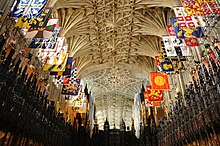
St George's Chapel in Windsor is the mother church of the Order of the Garter and the location of special services in relation to the Order.[17]
During their lifetime, all members of the Order of the Garter are entitled to display their heraldic crests and banners in St George's Chapel. While the Garter stall plates () stay in the chapel permanently, the crests and banners of deceased knights are, following presentation at the High Altar, removed from the chapel. Sometimes they are then given to institutions that were connected with the late knight, or kept privately depending on family wishes.[45] Originally after a knight's death, the crests became the property of Garter King of Arms, and these crests have been the subject of occasional exhibitions in the Earl Marshal's Court at the College of Arms.
Garter stall plates are small enamelled and engraved brass plates located in St George's Chapel as memorials to Knights of the Garter.[17]
Investiture and installation

Each June, on Garter Day, the members of the Order, wearing their habits and garter insignia, meet at Windsor Castle. When any new Knights and/or Ladies of the Garter are due for installation, an investiture ceremony is held in the Throne Room of Windsor Castle on the morning of Garter Day.[17] This ceremony is attended by all available Knights and Ladies Companion of the Order, wearing the ceremonial habits and garter insignia, and also by their spouses. The wording of the oath sworn by the new knights at this ceremony and of the Admonitions addressed to them in turn by the prelate and chancellor of the order when the several items of insignia are placed upon them are extremely similar to the traditions of the past.[46][47]
At the investiture ceremony, two senior knights or ladies of the order assist the Sovereign by placing the garter around the left leg of the new knight, or left arm of the new lady, and in the fastening of the riband and Lesser George about the body of the new knight or lady, and in the adjustment of the mantle and the collar.[48] After the investiture ceremony at Windsor is concluded, a state luncheon is held in the Banqueting Room. This is attended by the royal family, by all the Companions of the Order and their spouses, and by the Officers of the Order. After the banquet all the knights and ladies of the order, together with the prelate, chancellor and other officers of the order, in their mantles and ceremonial robes, led by the Military Knights of Windsor, move in procession, watched by a great crowd of spectators, through the castle, down the hill, which is lined with soldiers, to Saint George's Chapel for a worship service, before which the formal installation of the new knights takes place.[49]
While (then just) knights continued to be invested with their ensigns, the formal installation of knights at St George's Chapel ceased in 1805. Installation, along with the annual Garter service, returned in 1948;[45] on the occasion of the order's 600th anniversary.[50]
Privileges
Precedence


Members are assigned positions in the order of precedence, coming before all others of knightly rank, and above baronets. The wives, sons, daughters and daughters-in-law of Knights Companion are also assigned precedence. Relatives of Ladies Companion are not, however, assigned any special positions. (Generally, individuals can derive precedence from their fathers or husbands, but not from their wives.) The Chancellor is also assigned precedence, but since 1837 the office has been held by a diocesan bishop of the Church of England or a peer, who have a higher precedence than that bestowed by the Chancellorship.[51]
Knights Companion prefix "Sir"[52] and Ladies Companion prefix "Lady" to their forenames.[53] Wives of Knights Companion may prefix "Lady" to their surnames, but no corresponding privilege exists for husbands of Ladies Companion.[54] Such forms are not used by royalty, peers, peeresses, or Anglican clergymen, who instead use only the post-nominal letters.[52]
Knights and Ladies Companion use the post-nominal letters "KG" and "LG" respectively.[24] When an individual is entitled to use multiple post-nominal letters, those of the Order of the Garter appear before all others, except "Bt" or "Bart" (Baronet), "VC" (Victoria Cross) and "GC" (George Cross).[55]
Heraldry
In their heraldic achievements, members of the Order of the Garter may encircle their escutcheon with the Garter.[56] Knights and Ladies Companion are also entitled to receive heraldic supporters, a privilege granted to few other private individuals. While some families claim supporters by ancient use, and others have been granted them as a special reward, only members of the Royal Family, peers, Knights and Ladies Companion of the Garter, Knights and Ladies of the Thistle, and Knights and Dames Grand Cross of the junior orders of chivalry are automatically entitled to them.[56]
Gallery
-
Garter banner of Alexander Baring, 6th Baron Ashburton, now in Winchester Cathedral
-
Garter banner of Oliver Lyttelton, 1st Viscount Chandos, now in St John the Baptist Church, Hagley
-
Garter banner of Lord Wilson of Rievaulx, now at Jesus College Chapel, Oxford
-
Garter banner of Henry Manners, 8th Duke of Rutland, now at Belvoir Castle
-
Arms of Philip, Prince of Asturias at his investiture, encircled by the Garter (in 1554)
-
Garter stall plate of George, 5th Earl Cadogan
-
The arms of John, Duke of Marlborough, are encircled by both the Garter and the collar.
-
The arms of John Casimir of the Palatinate-Simmern, encircled by the Garter
Armorial
See also
- List of current knights and ladies of the Garter
- List of knights and ladies of the Garter
- The Society of the Friends of St George's and Descendants of the Knights of the Garter
Notes
- ^ a b c d "College of St George – Windsor Castle – The Order of the Garter". College of St George – Windsor Castle. Archived from the original on 15 July 2017. Retrieved 4 June 2010.
- ^ "The Order of the Garter". The Royal Family. 11 November 2015. Archived from the original on 7 April 2022. Retrieved 21 August 2016.
- ^ Bruges, William (1430–1440). "Stowe MS 594". William Bruges' Garter Book. Archived from the original on 9 January 2020. Retrieved 28 May 2023.
Languages: Anglo-Norman
- ^ a b Cokayne, George Edward, ed. (1887). Complete peerage of England, Scotland, Ireland, Great Britain and the United Kingdom, extant, extinct or dormant (A to Bo). Vol. 1. London: George Bell & Sons. p. 276.
- ^ a b c Chisholm 1911, pp. 851–867
- ^ Rogers 2018, pp. 131–134
- ^ Beltz 1841, pp. cxlix–cl
- ^ Harrison, James (1996). "The Plantagenets". Children's Encyclopedia of British History (Rev., reformatted and updated ed.). London: Kingfisher. p. 46. ISBN 1856960269.
- ^ Rogers 2018, pp. 126–131
- ^ "On the Origin of the Order of the Garter; from the Supplement to Granger's Biographical History". The Annual Register. 17: 145. December 1774. Archived from the original on 23 September 2015. Retrieved 23 November 2014.
- ^ Dibdin's 1811 edition of Rastell's 'The Pastime of People, Or, The Chronicles of Divers Realms; and Most Especially of the Realm of England' gives this word as 'substancyally'.
- ^ Rogers 2018, pp. 134–138
- ^ Rogers 2018, pp. 139–144
- ^ Cotton Nero A.x 128v Archived 13 January 2018 at the Wayback Machine.
- ^ Friedman, Albert B.; Osberg, Richard H. (1997). "Gawain's Girdle as Traditional Symbol". The Journal of American Folklore. 90 (157). American Folklore Society: 301–315. doi:10.2307/539521. JSTOR 539521.
- ^ Savage, Henry L. (1938). "Sir Gawain and the Order of the Garter". ELH. 5 (2). The Johns Hopkins University Press: 146–149. doi:10.2307/2871614. JSTOR 2871614.
- ^ a b c d e f "The Monarchy Today – Queen and Public – Honours – The Order of the Garter". The Royal Household. Archived from the original on 14 June 2009. Retrieved 4 June 2010.
- ^ Waddington, Raymond B. (1993). "Elizabeth I and the Order of the Garter". Sixteenth Century Journal. 24 (1). The Sixteenth Century Journal: 97–113. doi:10.2307/2541800. JSTOR 2541800. S2CID 165893968.
- ^ "Prince Andrew out of view as Tony Blair receives royal honour". BBC News. 13 June 2022. Archived from the original on 13 June 2022. Retrieved 13 June 2022.
- ^ Furness, Hannah (13 June 2024). "Former M15 boss becomes first female Chancellor of the Order of the Garter". The Telegraph. Retrieved 19 June 2024.
- ^ Gay, Oonagh (20 March 2006). "Honours Standard Note: SN/PC/2832" (PDF). United Kingdom Parliament. Archived from the original (PDF) on 16 October 2006. Retrieved 7 November 2006.
- ^ "College of St George – Windsor Castle – Orders of Chivalry". College of St George – Windsor Castle. Archived from the original on 19 February 2010. Retrieved 4 June 2010.
- ^ Begent & Chesshyre 1999, p. 198
- ^ a b "Select Committee on Public Administration Fifth Report". UK Parliament. 13 July 2004. Archived from the original on 23 November 2006. Retrieved 8 November 2006.
- ^ a b c "Royal Insight: June 2004: Focus: The Order of the Garter". The Royal Household. June 2004. Archived from the original on 27 September 2007.
- ^ Peter J Begent. The Most Noble Order of the Garter, its History and Ceremonial.
- ^ David Kemp (1992). The Pleasures and Treasures of Britain: A Discerning Traveller's Companion. Dundurn. p. 141. ISBN 9781770700703. Archived from the original on 8 April 2023. Retrieved 15 March 2023.
- ^ Kingston, Jeff (13 March 2005). "The Tokyo envoys: Englishmen in Japan". The Japan Times. Tokyo. Archived from the original on 4 June 2016.
- ^ Knight, Charles (1811). "9". Guide to Windsor.
- ^ "The origin and history of the various heraldic offices". The College of Arms. Archived from the original on 29 July 2010. Retrieved 16 November 2006.
- ^ Begent & Chesshyre 1999, p. 105
- ^ Begent & Chesshyre 1999, pp. 109–112
- ^ Begent & Chesshyre 1999, p. 116
- ^ Begent & Chesshyre 1999, p. 122
- ^ Begent & Chesshyre 1999, p. 143
- ^ Begent & Chesshyre 1999, p. 132
- ^ "The Register of the Order of the Garter". The Companion – magazine for the College of St George. No. 21. The Dean and Canons of Windsor. 13 June 2015. p. 12. Retrieved 23 April 2021 – via issuu.com.
- ^ a b "College of St George – Windsor Castle – Military Knights". College of St George – Windsor Castle. Archived from the original on 10 May 2010. Retrieved 4 June 2010.
- ^ a b c d e f g h i j k l m n Cox, Noel (1999). "The ceremonial dress and accoutrements of the Most Noble Order of the Garter". Heraldry News, the Journal of Heraldry (22). Journal of Heraldry Australia Inc.: 6–12. Archived from the original on 20 April 2003.
- ^ See for example the single roses on the collar of the effigy of Robert Willoughby, 1st Baron Willoughby de Broke, KG (died 1502) in Callington Church, Cornwall (see image File:RobertWilloughbyCallington.jpg).
- ^ See image File:Buckingham Palace - 02.jpg.
- ^ The Garter is worn over and above the left strap of the dress breeches of men but nowadays it is anachronistically worn over the trousers because the wearing of court dress for by most Garter Knights has fallen into disuse.
- ^ Una Campbell (1989). Robes of the Realm: 300 Years of Ceremonial Dress. Michael O'Mara Books. p. 21.
- ^ "- Order of the Black Eagle (Prussia). George V's star with garter". www.royalcollection.org.uk. Archived from the original on 19 April 2018. Retrieved 18 April 2018.
- ^ a b "Garter Banner List". Dean & Canons of Windsor. Archived from the original on 10 June 2017. Retrieved 23 April 2019.
- ^ William Berry. Encyclopaedia Heraldica Or Complete Dictionary of Heraldry. Vol. 1. Google eBook.
- ^ "Research guides No.1: The Order of the Garter" (PDF). St George's Chapel Archives and Chapter Library. s.v. "Oath". Archived (PDF) from the original on 23 September 2018. Retrieved 23 September 2018.
- ^ Thomas Robson (1830). The British Herald, or Cabinet of armorial bearings of the nobility and gentry of Great Britain & Ireland. p. 96. Google eBook.
- ^ De la Bere, Brigadier Sir Ivan (1964). The Queen's Orders of Chivalry. London: Spring Books. p. 85.
- ^ "Order of the Garter Timeline" (PDF). The Companion: The Magazine for the College of St George (21): 3. 2015. Archived from the original (PDF) on 22 September 2015. Retrieved 10 May 2017.
- ^ Mosley, Charles (2005). "Precedence". Burke's Peerage and Gentry. Archived from the original on 28 September 2008. Retrieved 18 September 2008.
- ^ a b "Knight". Forms of Address. Debretts. Archived from the original on 25 August 2009. Retrieved 11 August 2009.
- ^ "Ladies of the Garter and Ladies of the Thistle". Forms of Address. Debretts. Archived from the original on 21 August 2009. Retrieved 11 August 2009.
- ^ "Dame". Forms of Address. Debretts. Archived from the original on 7 August 2009. Retrieved 11 August 2009.
- ^ "Order of Wear". The UK Honours System. Cabinet Office. Archived from the original on 30 January 2006. Retrieved 21 August 2016.
- ^ a b Courtenay, Paul (14 October 2008). "The Armorial Bearings of Sir Winston Churchill". The Churchill Centre. Archived from the original on 6 April 2022. Retrieved 21 August 2016.
- ^ a b c d e f g h Stranger Knights and Ladies do not embellish the arms they use in their countries with British decorations.
References
- Ashmole, Elias (1672). Institution, Laws and Ceremonies of the Most Noble Order of the Garter. London.
- Begent, P.J.; Chesshyre, H. (1999). The Most Noble Order of the Garter: 650 Years. London: Spink and Son. ISBN 1902040201.
- Beltz, George Frederick (1841). Memorials of the Order of the Garter. London: William Pickering. Retrieved 27 October 2013.
- Chisholm, Hugh, ed. (1911). . Encyclopædia Britannica. Vol. 15 (11th ed.). Cambridge University Press. pp. 851–867.
- Fellowes, Edmund (1939). The Knights of the Garter, 1348–1939: With a Complete List of the Stall Plates in St. George's Chapel. Historical monographs relating to St. George's Chapel, Windsor Castle. Vol. 1. SPCK.
- Rogers, Clifford J. (2018). "The symbolic meaning of Edward III's Garter badge". In Baker, Gary P.; Lambert, Craig L.; Simpkin, David (eds.). Military Communities in Late Medieval England: essays in honour of Andrew Ayton. Woodbridge: Boydell. pp. 125–145. ISBN 9781783272983.
Further reading
- Hope, W. H. St.John; et al. (1901). The Stall Plates of the Knights of the Order of the Garter 1348–1485. Reprinted 2005.
External links

- Official webpage at: royal.uk
- Order of the Garter – official website of the British Monarchy
- St George's Chapel at Windsor Castle: Order of the Garter
- List of historic occupants of Garter stalls
- List of the Knights of the Garter
- BBC gallery: Order Of The Garter
- Brennan, I. G. "The Most Noble Order of the Garter." HeraldicSculptor.com. 2004.
- Velde, F. R. "Order of Precedence in England and Wales." 2003.








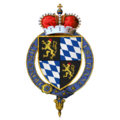
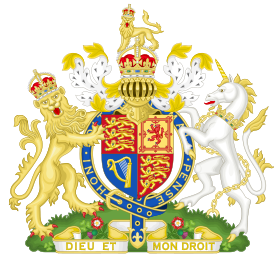
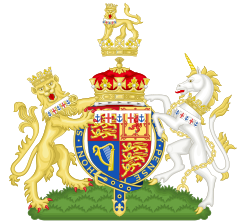

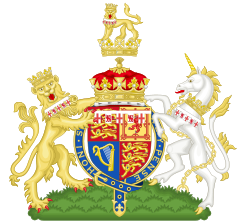


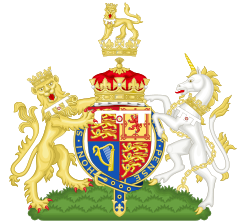

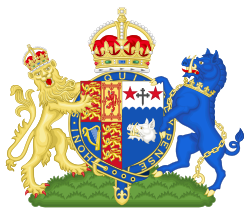




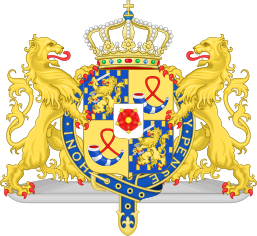

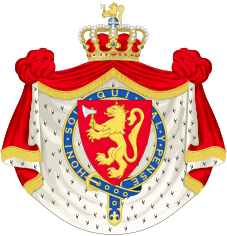
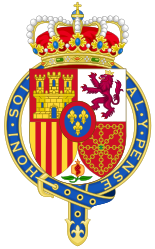






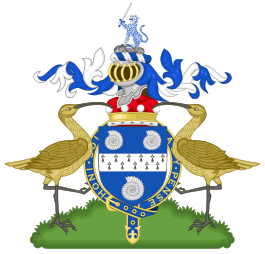
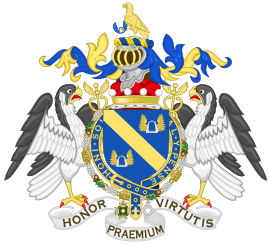

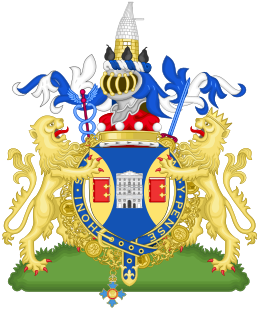

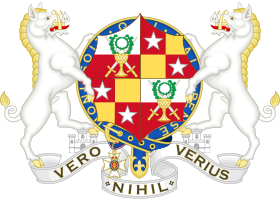

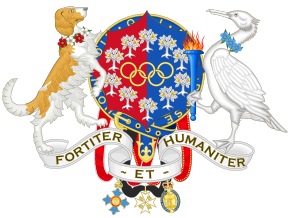





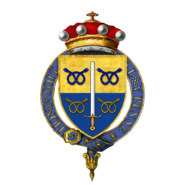
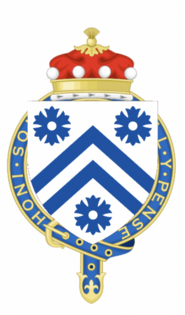

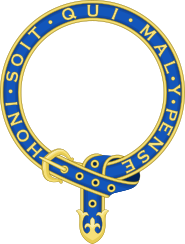
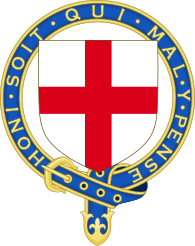

8 Annotations
First Reading
Nix • Link
Background on the Order of the Garter:
http://www.royal.gov.uk/output/Pa…
Second Reading
San Diego Sarah • Link
And if that's not enough, another site with the history, tradition, origins and photographs
https://www.thecrownchronicles.co…
San Diego Sarah • Link
The Order of the Garter in Pepys' days was restricted to 24 people ... men. In this House of Commons article they examin the 17th and 18th century challenges of having the right 24 people (men).
Monmouth got kicked out of the club! Surprise.
https://thehistoryofparliament.wo…
San Diego Sarah • Link
[AFTER THE RESTORATION] The ceremonies of the Order of the Garter were revived with yet more pomp and splendor than before. Charles II had continued to appoint Garter Knights whilst in exile, and within a year of his Restoration, he had brought the Order of the Garter back to its former glory.
Charles II quickly filled the Order to its full compliment, and great feasts were held in the tapestry-hung St. George’s Hall.
In 1670 the gravy alone for the three days celebration was made from: 249 lbs of beef; 74 lbs of bacon; four cases of veal; two cases of mutton; a case of pork; ten dozen pullets; 9 dozen sheep’s tongues; 18 dozen sweetbreads; 7 dozen marrow bones and much more besides.
12,000 prawns were eaten, as were 1,500 crawfish; 136 large lobsters; 118 large crabs; 400 scallops; 12 quarts of oysters; 16 barrels of pickled oysters; 8 lbs of caviar and a multitude of other delicacies including 2,000 eggs and 6,000 asparagus spears.
The feast cost nearly £2,395 or relatively in 2021’s money, £370,400.00 ($510,308.00).
For this feast Charles II sat on a dais in his robes as Sovereign of the Garter.
https://www.facebook.com/SaxeCobu…
Order of the Garter anniversary. 23rd April 1344 - 23rd April 2021
San Diego Sarah • Link
Cosmo, the future Duke of Turin, passed through Windsor in the Sprng of 1669, and these impressions are recorded in his journal.
I've corrected the spelling of names, guessed at the meaning of scanning errors, and increased the number of paragraphs, etc. If I guessed wrong, I apologize.
The road at first lay through woods, frequently intersected by meadows, but it afterwards changed into a corn country, thickly set with trees, till they came to Windsor, a populous town in the county of Bercheria, called by the English Berkshire, standing on the side of a hill, which, gently rising in the midst of a spacious and smiling champaign, has, on its top, an ancient and strong castle of stone, built in memory of his birth, by Edward III, with the assistance of William Wickham, Bishop of Winchester.
It contains within its walls the royal mansion, than which the kings of England have not a more delightful residence, divided into apartments and halls for the banquets, which are celebrated at the time that the Knights of the Order of the Garter hold their assemblies there; and on the side looking towards the Thames, which flows at a little distance in a copious stream, a noble gallery has been added by Queen Elizabeth, which commands a prospect both of the river and of the plain.
282
Amongst the things most worthy of observation, is the church, over against the principal entrance, which was formerly dedicated by Edward III to the Blessed Virgin, and to St. George of Cappadocia, the tutelary Saint of England and Protector of the Order of the Garter, and afterwards much embellished by Edward IV.
This temple is built according to the rules of the Gothic order, and is divided into three aisles, which have all flat roofs, adorned with arabesques, and in the middle aisle, which is superior to the others both in width and height, is situated the choir; on both sides of this, are stalls appropriated to the knights of the Garter, to which are affixed the arms of all those who have been enrolled in the order from the time of its first institution; and, amongst these, are enumerated many emperors, kings, and foreign princes.
Over each stall are the coats of arms of the present knights, surmounted with the diadem or bonnet (coronet) denoting their individual dignity, or else with some other token indicating their rank; and there is also a banner hung up with the arms of the knight and his sword.
The seat of the king, situated in the first place as you enter the choir, is distinguished from the rest by a canopy of purple velvet.
In front of the choir are the tribune and the altar, on which stand the candlesticks and the books, which are made use of when the English Liturgy is read, but according to the custom of that sect, there is no other ornament whatever.
San Diego Sarah • Link
PART 2
283
The chapel called Cardinal Wolsey's, which is within the church, is in repute rather, perhaps, from the remembrance of the individual who built it, than from the nobleness of the building, or its peculiar elegance.
The Order of the Garter was instituted by Edward III, son of Edward II, and is held in such esteem, that the most distinguished personages in Europe have always been ambitious of being members of it. The cause of its institution is attributed to an accident which happened to Johanna, Countess of Salisbury, whose garter, being loose, fell off in the presence of the said King Edward, who immediately took it up; and, as the gentlemen present took occasion to suspect and put a sinister interpretation upon this action, the king, turning to them, said, "Honi soit qui mal y pense," adding briefly, that that garter would someday be held by them in the highest honor, as happened shortly after by the institution of the Order which took its appellation from this very garter.
Some, wishing to assign to it a more honorable and specious origin, ascribe it to Richard I (reserving to Edward III the credit only of reducing the number of knights) that the reputation of an Order, rendered illustrious by so many distinguished personages might not be debased by the recollection of so low an origin.
284
In it, under Henry VIII, before he had renounced his allegiance to the Catholic Church, were enrolled Charles V, Emperor; Ferdinand, King of Hungary; Francis I, King of France; Emanuel, King of Portugal; James, King of Scotland, and Julian de Medici, brother of Pope Leo X.
In the reign of Edward VI, son of Henry VIII and Jane Seymour, it reckoned among its members Henry II, King of France: in the reign of Queen Mary, daughter of the same Henry VIII, Philip II, King of Spain, and Emanuel Philip, Duke of Savoy: and under Queen Elizabeth, also daughter of Henry VIII and Anne Boleyn, Maximilian, Emperor; Charles, and Henry III, King of France, the last Catholic Princes in the number of the Knights of the Garter; for in the times of Kings James I, Charles I, and Charles II, they have been objected to.
The Society of the Order of the Garter is composed of 26 knights, of whom the King of England is the sovereign and head; of 12 canons with a dean, who live together in the prebendal houses adjoining the church; of 12 vicars, and 26 poor knights, who are maintained out of the revenues of a college erected there on condition of praying daily for the knights of the Order.
285
The Bishop of Winchester, is prelate of the Order, a dignity which is united to that see, and is now held by Dr. George Morley. There is also a chancellor, and a registrar, which office is filled by the dean of the chapel of St. George, at Windsor.
The society is regulated by particular constitutions and statutes, which prescribe the ceremonies to be observed at the creation of the knights, and contain their privileges and obligations.
San Diego Sarah • Link
PART 3
None are admitted into this Order but persons illustrious for their birth or valor. They are obliged always to wear a garter of blue ribbon round the left leg, and are expressly forbidden to go out into public without this badge, under a penalty of two crowns, which is the perquisite of the officer of the Order, who denounces them; and a ribbon of the same color round the neck, to which is suspended a medal with the figure of St. George: and by a regulation made in the year 1626, the knights are to wear on their cloak, coat, or great coat, on the left side, in all places and it all companies, the arms of St. George, which are a cross with the garter, to which is appended: a star with rays, made in relievo of silver.
The dress which the knights wear on public and solemn occasions, is a cloak or long mantle, reaching to the ground, with a magnificent train of rich silk of a sky-blue color, flowered with gold, open in front, and fastened at the neck with two cords of silk and gold, with tassels of the same; they have a sword by their sides, and from the neck hangs the collar of the order, which is a necklace composed of roses of enameled gold, linked together and ornamented with jewels, from the center of which is suspended the figure of St. George; on the left leg is worn a sky-blue garter, on which, in characters made of gold and jewels, is inscribed the motto of the order, "Honi soit qui mal y pense."
In this dress the knights assemble at Windsor on the anniversary of the feast of St. George, the protector of the Order, the king being present as grand master; and when the church-service is over, they offer at the altar certain pieces of gold coin, which are received by the Bishop of Winchester, the prelate of the order, and afterwards walk in procession to the hall, where the banquet is prepared with regal magnificence.
The king sits under a canopy in the front part of the hall, dressed in the habit of the Order; and the knights, in the same dress, stand at a table a little way from that of the king, taking place according to the date of their admission.
The present Knights of the Garter are as follow, being named according to their places in the chapel of Windsor, which they take according to seniority.
287
Charles II, King of England, Sovereign of the Order, has the first place in the chapel, on the right hand as you enter.
The place opposite to that of the king was vacant, being reserved for the eldest son of his majesty.
San Diego Sarah • Link
PART 4
The places on the side of the king are filled by the following knights:
2. James, Duke of York, the king's brother.
3. Prince Robert, brother of the Elector Palatine of the Rhine. [RUPERT]
4. Frederick William, Margrave and Elector of Brandenburg.
5. My Lord James Cecil, Earl of Salisbury.
6. My Lord Henry Percy, Earl of Northumberland.
7. My Lord George, Duke of Buckingham.
8. My Lord George Digby, Earl of Bristol.
9. General Count Marsin.
10. My Lord Edward Montagu, Earl of Sandwich.
11. My Lord Charles Stuart, Duke of Richmond.
12. My Lord William Wentworth, Earl of Stratford.
13. This place is vacant.
288
On the side opposite, after the stall reserved for the king's eldest son, follow those of the undermentioned knights:
2. Prince Charles Louis, Elector Palatine of the Rhine,
3. William Henry of Nassau, Prince of Orange.
4. The Prince of Denmark.
5. My Lord Thomas Howard, Earl of Berkshire.
6. My Lord James Butler, Duke of Ormonde.
7. My Lord William Cavendish, Duke of Newcastle.
8. The Prince of Taranto.
9. My Lord George Monck, Duke of Albermarle.
10. My Lord Aubry de Vere, Earl of Oxford.
11. My Lord Edward Montagu, Earl of Manchester.
12. My Lord James Scott, Duke of Monmouth.
13. This place, which is vacant, makes up the number of the 26 stalls of the Knights of the Garter.
When his highness had seen everything contained in the castle — which is defended by a garrison, and well supplied by artillery, and commands the whole of that extensive plain, whose beauty, independently of the fertility of the land, is enhanced by the river Thames, which flows through it, and is navigable, he took leave in form of the Messrs. Neville, who, that they might shew every possible respect towards his highness, had insisted upon accompanying him to Windsor, and, entering his carriage, took the road through the park.
289
This was annexed to the castle by Queen Elizabeth, who frequently resorted to Windsor, to enjoy the pleasantness of the place, and to amuse herself with hunting the deer, which are found there in great abundance, and of many species; on which account also, the present king repairs thither, several times a year, for the diversion of hunting them.
@@@
From:
TRAVELS OF COSMO THE THIRD, GRAND DUKE OF TUSCANY,
THROUGH ENGLAND,
DURING THE REIGN OF KING CHARLES THE SECOND (1669)
TRANSLATED FROM THE ITALIAN MANUSCRIPT
https://archive.org/stream/travel…
His highness, Cosmo, must be considered only as a traveler. Under his direction, the narrator of the records was Count Lorenzo Magalotti, afterwards Secretary to the Academy del Cimento, and one of the most learned and eminent characters of the court of Ferdinand II.